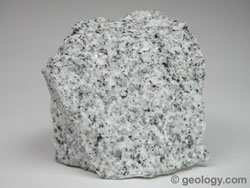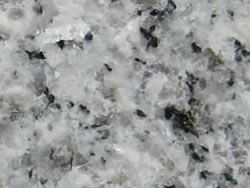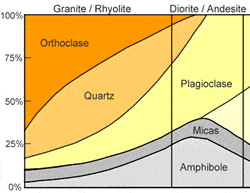Search This Blog
Wednesday, June 29, 2011
City living marks the brain
City living marks the brain
Neuroscientists study social risk factor for mental illness.
Alison Abbott
 At a research institute in Mannheim, Leila Haddad scolds subjects to stress them while imaging their brains.S. WOLFF
At a research institute in Mannheim, Leila Haddad scolds subjects to stress them while imaging their brains.S. WOLFF
Epidemiologists showed decades ago that people raised in cities are more prone to mental disorders than those raised in the countryside. But neuroscientists have avoided studying the connection, preferring to leave the disorderly realm of the social environment to social scientists. A paper in this issue of Nature represents a pioneering foray across that divide.
Using functional brain imaging, a group led by Andreas Meyer-Lindenberg of the University of Heidelberg's Central Institute of Mental Health in Mannheim, Germany, showed that specific brain structures in people from the city and the countryside respond differently to social stress (see pages 452 and 498). Stress is a major factor in precipitating psychotic disorders such as schizophrenia.
The work is a first step towards defining how urban life can affect brain biology in a way that has a potentially major impact on society — schizophrenia affects one in 100 people. It may also open the way for greater cooperation between neuroscientists and social scientists. "There has been a long history of mutual antipathy, particularly in psychiatry," says sociologist Craig Morgan at the Institute of Psychiatry in London. "But this is the sort of study that can prove to both sides that they can gain from each others' insights."
Meyer-Lindenberg works on risk mechanisms in schizophrenia, and previously focused on the role of genes. But although a dozen or so genes have been linked to the disorder, "even the most powerful of these genes conveys only a 20% increased risk", he says. Yet schizophrenia is twice as common in those who are city-born and raised as in those from the countryside, and the bigger the city, the higher the risk (see 'Dose response?').
 SOURCE: C. B. PEDERSEN & P. B. MORTENSEN ARCH. GEN. PSYCHIATRY 58, 1039–1046 (2001)
SOURCE: C. B. PEDERSEN & P. B. MORTENSEN ARCH. GEN. PSYCHIATRY 58, 1039–1046 (2001)
So Meyer-Lindenberg set out to study how city life might increase the risk of mental illness. The team scanned the brains of 32 student volunteers while they performed arithmetic tests. At the same time, the students received negative feedback through headphones. "We'd tell individuals they were performing below average, and suggest impatiently they hurry up a bit, so they'd feel they were failing," he explains.
This 'social stress' activated many brain areas, two of them specifically correlated with the volunteers' history of urban living. The amygdala, which processes emotion, was activated only in people currently living in a city. And the cingulate cortex, which helps to regulate the amygdala and processes negative emotions, responded more strongly in those brought up in cities than in those who grew up in towns or rural areas.
The initial experiment showed such clear associations that Meyer-Lindenberg didn't think anyone would believe them. So he did a similar experiment on another 23 subjects, this time adding visual feedback that allowed participants to see the investigators' frowns. He found the same sturdy associations.
He now plans to repeat the work in the general population, where urban–rural differences are likely to be even stronger than in students. He also plans to study how other risk factors identified by social scientists — such as being an immigrant — affect stress processing. "We will use tools from social scientists to help us quantify things like perceived discrimination, social support networks, or stigma," he says.
Yet he has had trouble interesting his social-science colleagues in setting up joint projects. Such lack of sympathy across the cultural divide is common, says Ernst Fehr, an economist at the University of Zurich, Switzerland, and a pioneer in the field of neuroeconomics, which studies the neurological basis of economic decisions. "But social problems have neurobiological effects, which, in turn, may exacerbate the social problems," he says.
The social sciences have as much to gain from crossing disciplinary boundaries as the biological sciences, says Morgan. "Sociologists and epidemiologists establish associations that are plausible — like immigrants may suffer more mental illness because of social isolation — but they are validated when neuroscientists demonstrate a robust biological mechanism."
For his future investigations, Meyer-Lindenberg is seeking urban planners who can help him to tease out how variables such as green space and population density contribute to the neurobiological impact of city living. Hans Wirz of the urban planning office in Basel, Switzerland, says that it took decades to integrate knowledge about the biomedical effects of the cityscape into his profession. "But when it comes to mental health we haven't a clue."
Posted by
Robert Karl Stonjek
Robert Karl Stonjek
Mood and experience: Life comes at you
Mood and experience: Life comes at you
Psychology & Psychiatry(Medical Xpress) -- Living through weddings or divorces, job losses and children’s triumphs, we sometimes feel better and sometimes feel worse. But, psychologists observe, we tend to drift back to a “set point”—a stable resting point, or baseline, in the mind’s level of contentment or unease.
Research has shown that the set points for depression and anxiety are particularly stable over time. Why?
“The overwhelming view within psychiatry and psychology is that is due to genetic factors,” says Virginia Commonwealth University psychiatrist Kenneth S. Kendler. “Yet we know that extreme environmental adversities, such as abuse in childhood or wartime trauma, have a long-term impact on people.” Kendler had a hunch that environmental experiences also influence the set points for anxiety and depression.
His new study, which will be published in an upcoming issue of Psychological Science, a journal of the Association for Psychological Science, concludes that they do. Kendler and an international roster of collaborators—VCU colleagues Lindon J. Eaves, Erik K. Loken, Judy Silberg, and Charles O. Gardner; Nancy L. Pedersen and Paul Lichtenstein of Karolinska Institutet in Stockholm, Sweden; Christel M. Middeldorp and Dorret Boomsma of VU University, Amsterdam; and Chandra Reynolds of the University of California—find that life experiences play a central role in establishing the set points for anxiety and depression, perhaps even more than genes do.
Kendler used a group of research subjects time-honored for testing the effects of nature and nurture: identical twins, whose genes are the same, but whose life stories diverge, showing the effects of environmental factors on a developing person.
Scouring the world, he gathered a large and varied sample: nine data sets from longitudinal twin studies—a total of more than 12,000 twins, including 4,235 pairs and 3,678 unpaired twins, from three continents. The twins had all completed reports of their own symptoms of anxiety and depression, three times in eight of the studies; twice in the ninth. Each study covered five or six years. The youngest subjects were just under 11, the oldest almost 67.
Patching together a composite of these life segments—from pre-pubescence to early adulthood, middle age to retirement age—VCU’s Charles Gardner designed a series of statistical analyses, which yielded a clear curve. The set points of the 10-year-old pairs were the same or closely similar. As the twins moved through adolescence and adulthood, however, those points diverged increasingly, until the differences leveled out at around age 60.
The set points were stable—they didn’t wander all over the place—though not permanent; they weren’t necessarily the same for 50 years. But in examining the difference between those points in pairs of genetically identical people, the researchers saw that while genes may play a part in determining our emotional predilections, it is life that shows our moods the place they want to settle.
The study has implications beyond anxiety and depression, says Kendler. “Environmental experiences have a memory and stay with us. What governs the emotional set point of adults is a mixture of genetic factors and the total aggregate of environmental experiences.” The moral of the story? “If you want to be happy in old age, live a good life.”
Provided by Association for Psychological Science
"Mood and experience: Life comes at you." June 28th, 2011. http://medicalxpress.com/news/2011-06-mood-life.html
Sent to you by
Robert Karl Stonjek
Robert Karl Stonjek
Optogenetics researcher develops wireless brain stimulator
Optogenetics researcher develops wireless brain stimulator
NeuroscienceImage: Ed Boyden
(Medical Xpress) -- In a major step forward in optogenetics, MIT researcher Christian Wentz has developed a sort of wireless hat that can be used to transmit light to photo-sensitized cells in the brain, thus stimulating them to fire when struck by light, or to cease firing, whichever has been programmed for. Previously such optical therapies were done by connecting a light source to a cable or tether to deliver the power for the light sources (lasers or LEDs); now as described in a paper he and his colleagues have published in the Journal of Neural Engineering, a transmitter can be used to create a magnetic field, which in turn is converted to electricity in a tiny hat placed atop a mouse’s head, that is then used to power the implanted light sources.
Over the past several years, the field of optogenetics has arisen, mostly due to the efforts of Ed Boyd, a former physicist and electrical engineer. Optogenetics is where brain cells (neurons) are coaxed into growing their own photo receptors by inserting the genes of other cells, such as green algae, that naturally respond to light, into the neurons being studied. When light is applied, the newly grown photo receptors open and allow the flow of positively charged ions to interact with the normal firing mechanism of the neurons, which means they can be controlled with an external source, in this case light.
The whole purpose of such research is to find out if such devices might help people who suffer from brain disorders such as epilepsy, which is in essence, a disorder of the brain where neurons begin firing all willy nilly causing an electrical storm of sorts, resulting in convulsions. If certain neurons within the brain that are normally supposed to control such outbursts could be stimulated via light, then the storm could perhaps be headed off before it ever really gets going, thus eliminating the convulsions altogether.
The newly developed hat developed by Wentz, controlled by a computer via USB port, will allow researchers to study how neurons in the brain work in much more natural situations. Without a tether, subjects (mice) under study should be able to move around the way they normally would in their normal environment, which of course allows the brain to function as it would were it not in a lab; the optimal situation, of course, for studying how the brain works.
This video is not supported by your browser at this time.
Video: TED conference. Ed Boyden shows how, by inserting genes for light-sensitive proteins into brain cells, he can selectively activate or de-activate specific neurons with fiber-optic implants. With this unprecedented level of control, he's cured mice of analogs of PTSD and certain forms of blindness. On the horizon: neural prosthetics.
More information: A wirelessly powered and controlled device for optical neural control of freely-behaving animals, Christian T Wentz et al 2011 J. Neural Eng. 8 046021 doi:10.1088/1741-2560/8/4/046021
Abstract
Optogenetics, the ability to use light to activate and silence specific neuron types within neural networks in vivo and in vitro, is revolutionizing neuroscientists' capacity to understand how defined neural circuit elements contribute to normal and pathological brain functions. Typically, awake behaving experiments are conducted by inserting an optical fiber into the brain, tethered to a remote laser, or by utilizing an implanted light-emitting diode (LED), tethered to a remote power source. A fully wireless system would enable chronic or longitudinal experiments where long duration tethering is impractical, and would also support high-throughput experimentation. However, the high power requirements of light sources (LEDs, lasers), especially in the context of the extended illumination periods often desired in experiments, precludes battery-powered approaches from being widely applicable. We have developed a headborne device weighing 2 g capable of wirelessly receiving power using a resonant RF power link and storing the energy in an adaptive supercapacitor circuit, which can algorithmically control one or more headborne LEDs via a microcontroller. The device can deliver approximately 2 W of power to the LEDs in steady state, and 4.3 W in bursts. We also present an optional radio transceiver module (1 g) which, when added to the base headborne device, enables real-time updating of light delivery protocols; dozens of devices can be controlled simultaneously from one computer. We demonstrate use of the technology to wirelessly drive cortical control of movement in mice. These devices may serve as prototypes for clinical ultra-precise neural prosthetics that use light as the modality of biological control.
Optogenetics, the ability to use light to activate and silence specific neuron types within neural networks in vivo and in vitro, is revolutionizing neuroscientists' capacity to understand how defined neural circuit elements contribute to normal and pathological brain functions. Typically, awake behaving experiments are conducted by inserting an optical fiber into the brain, tethered to a remote laser, or by utilizing an implanted light-emitting diode (LED), tethered to a remote power source. A fully wireless system would enable chronic or longitudinal experiments where long duration tethering is impractical, and would also support high-throughput experimentation. However, the high power requirements of light sources (LEDs, lasers), especially in the context of the extended illumination periods often desired in experiments, precludes battery-powered approaches from being widely applicable. We have developed a headborne device weighing 2 g capable of wirelessly receiving power using a resonant RF power link and storing the energy in an adaptive supercapacitor circuit, which can algorithmically control one or more headborne LEDs via a microcontroller. The device can deliver approximately 2 W of power to the LEDs in steady state, and 4.3 W in bursts. We also present an optional radio transceiver module (1 g) which, when added to the base headborne device, enables real-time updating of light delivery protocols; dozens of devices can be controlled simultaneously from one computer. We demonstrate use of the technology to wirelessly drive cortical control of movement in mice. These devices may serve as prototypes for clinical ultra-precise neural prosthetics that use light as the modality of biological control.
© 2010 PhysOrg.com
"Optogenetics researcher develops wireless brain stimulator." June 28th, 2011. http://medicalxpress.com/news/2011-06-optogenetics-wireless-brain.html
Posted by
Robert Karl Stonjek
Robert Karl Stonjek
Don't sit on your wallet
Your wallet can be real pain for your back and the buttocks, and it can even lead to shooting pains down the legs. Sitting on a wallet for prolonged hours every day can compress sciatic nerve which passes beneath piriformis muscle and leads to piriformis syndrome, low back pain & self-inflicted sciatica.The wallet acts as a wedge that forces the pelvis, spine and body out of alignment. Just as you would not sit on a brief case or a rock for an extended period of time, you should not sit on your wallet. Anyone who drives more than a half hour sitting on a wallet is a candidate for sciatica or back pain.
The healthiest option is to move the wallet to your front pocket. If it’s must to keep your wallet in your back pocket, you should remove it before you sit down.
Your wallet can be real pain for your back and the buttocks, and it can even lead to shooting pains down the legs. Sitting on a wallet for prolonged hours every day can compress sciatic nerve which passes beneath piriformis muscle and leads to piriformis syndrome, low back pain & self-inflicted sciatica.
The wallet acts as a wedge that forces the pelvis, spine and body out of alignment. Just as you would not sit on a brief case or a rock for an extended period of time, you should not sit on your wallet. Anyone who drives more than a half hour sitting on a wallet is a candidate for sciatica or back pain.
The healthiest option is to move the wallet to your front pocket. If it’s must to keep your wallet in your back pocket, you should remove it before you sit down.
The healthiest option is to move the wallet to your front pocket. If it’s must to keep your wallet in your back pocket, you should remove it before you sit down.
What is Granite?
What is Granite? |

| Granite: The specimen above is a typical granite. It is about two inches (five centimeters) across. The grain size is coarse enough to allow recognition of the major minerals. The pink grains are orthoclase feldspar and the clear to smoky grains are quartz or muscovite. The black grains can be biotite or hornblende. Numerous other minerals can be present in granite. |
The Best-Known Igneous Rock
Granite is the best-known igneous rock. Many people recognize granite because it is the most common igneous rock found at Earth's surface and because granite is used to make many objects that we encounter in daily life. These include counter tops, floor tiles, paving stone, curbing, stair treads, building veneer and cemetery monuments. Granite is used all around us - expecially if you live in a city.
Granite is also well-known from its many world-famous natural exposures. These include: Stone Mountain, Georgia; Yosemite Valley, California, Mount Rushmore, South Dakota; Pike's Peak, Colorado; and White Mountains, New Hampshire.
Multiple Definitions of Granite
The word “granite” is used in a variety of ways by different people. A simple definition is used in introductory courses; a more precise definition is used by petrologists (geologists who specialize in the study of rocks); and, the definition of granite expands wildly when used by people who sell decorative stone such as countertops, tile and building veneer.
These multiple definitions of granite can lead to communication problems. However, if you know who is using the word and who they are communicating with, you can interpret the word in its proper context. Three common usages of the word “granite” are explained below.
A) Introductory Course Definition
Granite is a coarse-grained, light-colored igneous rock composed mainly of feldspars and quartz with minor amounts of mica and amphibole minerals. This simple definition enables students to easily identify the rock based upon a visual inspection.
B) Petrologist's Definition
A plutonic rock in which quartz makes up between 10 and 50 percent of the felsic components and alkali feldspar accounts for 65 to 90 percent of the total feldspar content. Applying this definition requires the mineral identification and quantification abilities of a competent geologist.
Many rocks identified as “granite” using the introductory course definition will not be called “granite” by the petrologist - they might instead be alkali granites, granodiorites, pegmatites or aplites. A petrologist might call these “granitoid rocks” rather than granites. There are other definitions of granite based upon mineral composition.
The chart at right illustrates the range of granite compositions. From the chart you can see that orthoclase feldspar, quartz, plagioclase feldspar, micas, and amphiboles can each have a range of abundances.
C) Commercial Definition
The word “granite” is used by people who sell and purchase cut stone for structural and decorative use. These "granites" are used to make countertops, floor tiles, curbing, building veneer, monuments and many other products.
In the commercial stone industry a “granite” is a rock with visible grains that is harder than a marble. Under this definition gabbro, basalt, pegmatite, schist, gneiss, syenite, monzonite, anorthosite, grannodiorite, diabase, diorite and many other rocks will be called “granite”. The collection of images at right illustrates the range of rocks that might be called "granite".
Uses of Granite
Granite has been used for thousands of years in both interior and exterior applications. Rough-cut and polished granite is used in buildings, bridges, paving, monuments and many other exterior projects. Indoors, polished granite slabs and tiles are used in countertops, tile floors, stair treads and many other practical and decorative features.
High price often reduces the popularity of a construction material and granite often costs significantly more than man-made materials in most projects. However, granite is frequenly selected because it is a prestige material, used in projects to produce impressions of elegance, durability and lasting quality.
Most of the granite produced in the United States comes from high quality deposits in five states: Massachusetts, Georgia, New Hampshire, South Dakota and Idaho.
Granite in the Continental Crust
Most introductory geology textbooks report that granite is the most abundant rock in the continental crust. At the surface granite is exposed in the cores of many mountain ranges, within large areas known as "batholiths," and in the core areas of continents known as "shields."
The large mineral crystals in granite are evidence that it cooled slowly from molten rock material. That slow cooling had to have occurred beneath Earth's surface and required a long period of time to occur. If they are today exposed at the surface the only way that could happen is if the granite rocks were uplifted and the overlying sedimentary rocks were eroded.
In areas where Earth's surface is covered with sedimentary rocks, granites, metamorphosed granites or closely related rocks are usually present beneath the sedimentary cover. These deep granites are known as "basement rocks".
Subscribe to:
Posts (Atom)











